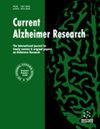阿尔茨海默病眼动分析及其检测算法的研究进展。
IF 1.8
4区 医学
Q3 CLINICAL NEUROLOGY
引用次数: 0
摘要
阿尔茨海默病(AD)被认为是最具挑战性的痴呆症之一。越早诊断出阿尔茨海默病,医生就越容易找到治疗方法。本文在总结2013年以前有关眼动与AD关系的研究成果的基础上,综述了近十年来发表的仅与AD密切相关的34篇原创眼动研究论文,指出前摄动任务(4篇)和反前摄动任务(5篇)、阅读任务(3篇)、视觉搜索任务(3篇)是眼动研究的热点、一些研究者关注了 King-Devick 任务(2 篇论文)、阅读任务(3 篇论文)和特殊任务(8 篇论文),并开始使用不同囊回任务的组合来检测眼动与 AD 的关系,这在以前是没有的。这些都反映了眼动任务的多样性以及眼动与注意力缺失症之间关系的复杂性和难度。在此基础上,我们对目前眼动数据集的处理和分析方法进行了详细的分析和讨论,并指出不能将某些可能对利用眼动研究进行早期AD诊断尤为重要的关键数据错误地归类为噪声而予以剔除。最后,我们指出,开发能够准确去噪、分类和快速处理海量眼动数据的方法,对于检测眼动以早期诊断注意力缺失症意义重大。本文章由计算机程序翻译,如有差异,请以英文原文为准。
Research Progress of Eye Movement Analyses and its Detection Algorithms in Alzheimer's Disease.
Alzheimer's disease (AD) has been considered one of the most challenging forms of dementia. The earlier the people are diagnosed with AD, the easier it is for doctors to find a treatment. Based on the previous literature summarizing the research results on the relationship between eye movement and AD before 2013, this paper reviewed 34 original eye movements research papers only closely related to AD published in the past ten years and pointed out that the prosaccade (4 papers) and antisaccade (5 papers) tasks, reading tasks (3 papers), visual search tasks (3 papers) are still the research objects of many researchers, Some researchers have looked at King-Devick tasks (2 papers), reading tasks (3 papers) and special tasks (8 papers), and began to use combinations of different saccade tasks to detect the relationship between eye movement and AD, which had not been done before. These reflect the diversity of eye movement tasks and the complexity and difficulty of the relationship between eye movement and AD. On this basis, the current processing and analysis methods of eye movement datasets are analyzed and discussed in detail, and we note that certain key data that may be especially important for the early diagnosis of AD by using eye movement studies cannot be miss-classified as noise and removed. Finally, we note that the development of methods that can accurately denoise and classify and quickly process massive eye movement data is quite significant for detecting eye movements in early diagnosis of AD.
求助全文
通过发布文献求助,成功后即可免费获取论文全文。
去求助
来源期刊

Current Alzheimer research
医学-神经科学
CiteScore
4.00
自引率
4.80%
发文量
64
审稿时长
4-8 weeks
期刊介绍:
Current Alzheimer Research publishes peer-reviewed frontier review, research, drug clinical trial studies and letter articles on all areas of Alzheimer’s disease. This multidisciplinary journal will help in understanding the neurobiology, genetics, pathogenesis, and treatment strategies of Alzheimer’s disease. The journal publishes objective reviews written by experts and leaders actively engaged in research using cellular, molecular, and animal models. The journal also covers original articles on recent research in fast emerging areas of molecular diagnostics, brain imaging, drug development and discovery, and clinical aspects of Alzheimer’s disease. Manuscripts are encouraged that relate to the synergistic mechanism of Alzheimer''s disease with other dementia and neurodegenerative disorders. Book reviews, meeting reports and letters-to-the-editor are also published. The journal is essential reading for researchers, educators and physicians with interest in age-related dementia and Alzheimer’s disease. Current Alzheimer Research provides a comprehensive ''bird''s-eye view'' of the current state of Alzheimer''s research for neuroscientists, clinicians, health science planners, granting, caregivers and families of this devastating disease.
 求助内容:
求助内容: 应助结果提醒方式:
应助结果提醒方式:


